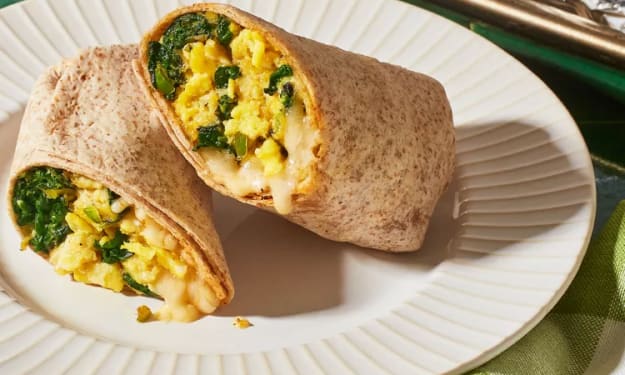The Phases of Hunger & Fullness
A deep dive on this intuitive eating cue

While intuitive eating is much more than just eating when you’re hungry and stopping when you’re full, it can be a helpful place for folks to start when they are new to it! Over time, this can transform into dismantling messages about bodies and food, building movement patterns that are supportive and joyful, and living a life in tune with individual body needs and cues.
Why is hunger and fullness recognition even important? Being able to recognize when we are hungry provides us with a powerful opportunity to meet our body needs for energy and nutrients. If we didn’t feel hungry, we probably wouldn’t eat very much or at all, and I’m not sure humans would have lasted this long without food or fluids.
And fullness tells us when we’ve had enough for the time being – we have a stopping point both mentally and physiologically for a reason, the stomach only holds so much volume!
What does hunger or fullness feel like? This is my favourite question to answer, because it lets me truly put on a “counselling” hat and get to know the person in front of me (and help them get to know themselves too)!
I like to conceptualize hunger and fullness as several phases that the human body can move between – sometimes within a meal, sometimes over the course of the day, and sometimes even across longer spans of time. If you didn’t already know, human bodies are complex and do lots of things on their own schedules.
The early phase of hunger is where folks often get confused, and this is because its cues are very subtle and not always physical. In the early phase, we might notice that we’re thinking about food more often or starting to seek out food. This might look like thinking about lunch mid-morning, or walking into your pantry or checking your fridge without feeling any sort of tummy grumbles. The brain is noticing a need for energy and because we don’t really “hunt” for food anymore, our food-seeking behaviours are slightly different. We’re identifying where food is available and what options we can pick from.
The middle phase of hunger is where we notice more physical signs – maybe our stomach is starting to gurgle, we’re noticing that our focus is reduced or our mood is less than ideal, or we’re feeling the beginnings of a headache. This is typically where we start eating!
The late phase of hunger is the extreme, where we’re feeling dizzy or ill, are outwardly cranky or angry, or feel so much abdominal pain that we need to lay down. We often don’t know what to do here – we don’t know whether we should start eating or what to eat. In some severe cases, this could be where the risk of passing out or a dangerously low blood sugar occurs. If we do start eating here, it’s typically fast and we don’t often chew well.
Now on the other end, we have fullness. In early fullness, we also don’t show many physical signs – typically we notice interest in continuing to eat drops off, we are taking longer between bites and the novelty has worn off. Our brain is getting bored!
In mid-fullness, we start to demonstrate some physical cues, such as the feeling of the stomach being filled, an improved mood and energy level. We’re starting to feel comfortable and the sensations of hunger are gone.
In late fullness, we’re getting to another extreme. We’re noticing bloating, some abdominal pain and potentially even a drop in energy levels – the “sluggish” feeling. This is often related to a shift in blood flow from the brain to the digestive system in order to fuel the muscles and tissues about to process your meal or snack! We might even feel ill with some panic about what to do – should we lay down, or should we move around? We might have fears about getting sick as well.
The extremes are really easy to identify, because they’re strong and visceral body reactions. This is often why folks may have more difficulty identifying the early and middle phases of both hunger and fullness, because neither of them is blatantly obvious or even physical. If we start in the extremes, we’re more likely to end up in the extremes – starting a meal with excessive hunger means we’re more likely to end up excessively full because we’ve missed the early signs to stop.
If you’re ending up in the extremes often, there are a couple things you can do to build more confidence and comfort!
Setting aside regular opportunities to eat to avoid extended periods of time between meals and snacks that contribute to extreme hunger can be a big help. It can almost feel mechanical and uncomfortable, especially if you don’t notice signs of hunger and feel that your appetite is low. Eating and self-feeding are developmental skills, and our brain is learning constantly! We can re-train the body to have regular hunger cues so we can better tailor our eating opportunities for comfort.
Planning to take short breaks in the middle of meals and snacks may also be a helpful trick. If we’re used to rushing through a meal or snack, we might not get the same opportunity to tune in. Stopping for a few minutes at the middle of a meal or snack gives us a chance to check in, without the expectation or pressure of ending the eating occasion. If we’re still noticing signs of hunger, we can continue. If we’re starting to notice some early fullness, we can spread out bites and take more short breaks to see what this turns in to. If we notice we’re at the middle phase of fullness and we’re comfortable, we can pack up what’s left of the meal or snack and finish it later when we’re hungry again!
Getting support is also important when you’re learning your hunger and fullness cues. If you have a history of chronic dieting, it may be harder to unlearn messages about hunger and fullness and these can be barriers to trusting your body. Talking to an experienced dietitian and therapist combination can be a transformative self-care investment to truly align with wellness that doesn’t hinge on changing your body or restricting your food intake.
With time and lots of practice, you can become a confident intuitive eater!
About the Creator
Emily the Period RD
I help people with periods navigate menstrual health education & wellness with a healthy serving of sass (and not an ounce of nutrition pseudoscience).






Comments
There are no comments for this story
Be the first to respond and start the conversation.